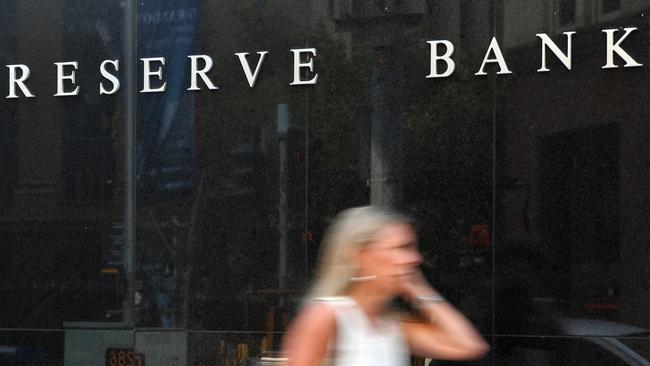Reserve Bank may have to cut official rates below 1pc, says UBS
The RBA may have to take its official cash rate below 1pc if cuts to that level fail to stabilise the housing market, warns UBS.

The Reserve Bank may have to reduce its official cash rate below 1 per cent if cuts to that level fail to stabilise the housing market, says UBS.
The warning follows surprisingly weak growth in the December quarter and evidence that a sharp slowdown in the second half of 2018 continued into the March quarter of this year.
UBS chief economist George Tharenou says the RBA needs to cut rates to 1 per cent from 1.5 per cent now and to make those cuts more effective, it should signal that it is prepared to cut further if need be.
“This would support confidence and allow the market pricing to ‘carry the cut’ via a lower terminal rate and maintain downward pressure on the Australian dollar,” he said.
“Otherwise if the RBA’s cut is ‘reluctant’, the market reaction may deem it as hawkish, and provide limited ‘bang for buck’. This may force an even greater than desired easing later on to ‘shock the market’.”
He also indicated that investors also need to consider extreme scenarios for domestic monetary policy, such as quantitative easing.
“UBS thinks if the RBA’s 50 bps of cuts fail to stabilise housing, we can’t rule out the RBA being forced to cut below 1 per cent,” he said.
“Indeed, UBS thinks investors need to consider extreme scenarios given in 2012 (RBA Governor Philip) Lowe said: ‘Somewhere around 1 per cent plus or minus a bit...other options of unconventional monetary policy become viable’.”
With economic growth “collapsing” to a 0.9 per cent annualised pace in the second half of 2018 - the worst since the global financial crisis - and the outlook remaining negative as housing activity has only just peaked at a record high and a negative household wealth effect only just starting, Mr Tharenou has no doubt that the central bank will need to cut the cash rate, which has been steady since August 2016.
He said an easing of lending standards is unlikely near-term, given Australian Prudential Regulation Authority chair Wayne Byres said in January that “while the temporary lending benchmarks are being removed (interest-only and investor credit growth caps), the changes we have made to lift lending standards are designed to be permanent”, including the 7.25 per cent interest rate servicing floor, curbs on high loan-to-valuation loans, and borrower verification.
“Indeed, APRA argues ‘credit growth for housing remained broadly stable, indicating …measures have not had an undue impact on credit availability’,” Mr Tharenou noted.
“Furthermore, ASIC in February 2019 clarified guidelines that ‘a benchmark figure does not provide any positive confirmation of …consumer’s income and expenses’.”
Mr Tharenou expects the RBA to introduce an “explicit easing bias” at its May meeting, ahead of cutting the cash rate by 25 basis points in July and August.
“However, if the labour market weakens in the next two prints, we can’t rule out an earlier cut,” he added.
The key upside risk to his view is the possibility of a massive fiscal stimulus in the April 2 budget.
“We expect the budget to announce household tax cuts of $8 billion - $10bn plus $5bn in fiscal transfers, but constrained by maintaining a surplus projection,” he said.





To join the conversation, please log in. Don't have an account? Register
Join the conversation, you are commenting as Logout